Handmade rugs by Doshi Levien pay homage to tribal Indian folk embroidery
Milan 2014: the intricate embroidery of this rug collection, by London studio Doshi Levien for Spanish rug maker Nanimarquina, combines traditional techniques with spontaneous compositions (+ slideshow).

The Rabari Collection features three carpets made from 100 percent New Zealand wool. Each one has been handmade in India using traditional hand-knotted and hand-woven Sumak techniques – a method that produces finely woven, durable material.
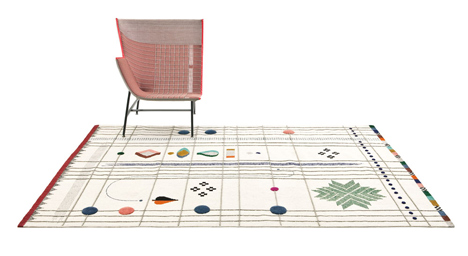
"At the very beginning of the project, we decided to create a series of rugs that evoke the sensual and shiny world of the tribal folk embroidery of India," explained Nipa Doshi from Doshi Levien.
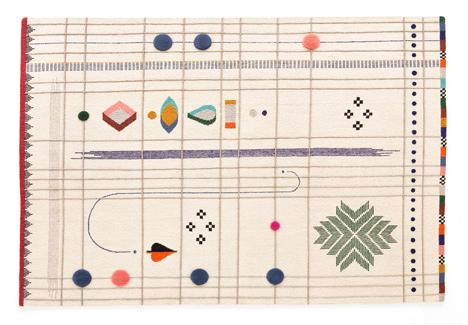
"We already had in mind intricately hand crafted embroideries made by the Nomadic community of the Rabaris from the Kutch region," Doshi told Dezeen.
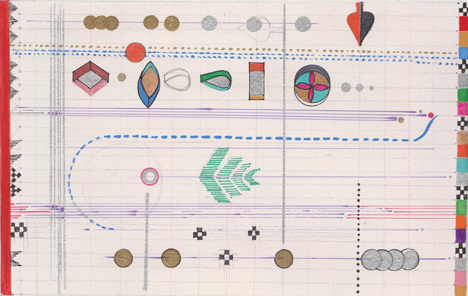
The collection was designed in partnership with Barcelona based Nanimarquina, who specialises in manufacturing rugs in countries with long-standing traditions of craftsmanship including Nepal, Pakistan and Morocco.
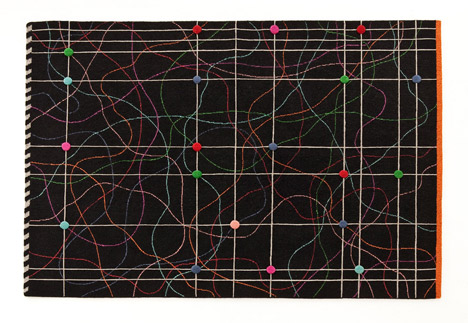
An embroidery workshop in Ahmedabad, a town in Gujarat, India that is owned by one of Doshi's relatives was given the task of creating the carpets, employing 25 highly skilled craftswomen.
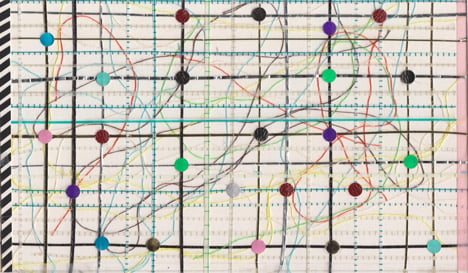
"They were all experts in hand embroidery, working with glistening mirrors, silk and cotton thread and metallic sequins amongst other non-precious materials," said Doshi.
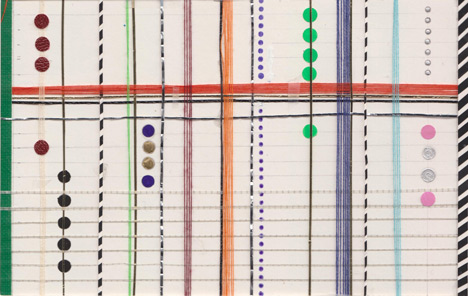
The result is three different styles of rug – two beige and one black – that feature a combination of straight lines, spots and different colours. They come in three sizes, ranging from 170 by 240 centimetres to 300 centimetres by 400 centimetres.
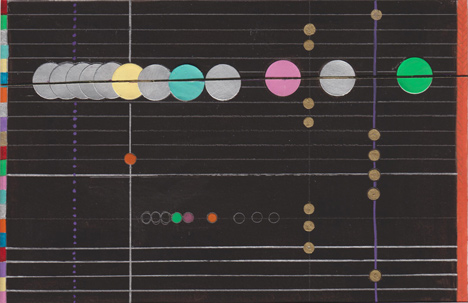
The black variant features a series of lines criss-crossing across the surface. At some of the junctions between the horizontal and vertical lines, multicoloured discs are attached and swirling lines of fabric trace their way across the surface at random.
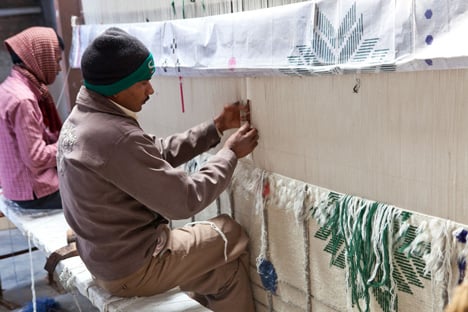
One of the beige rugs features a lattice of darker colour fabric with rows of dots. In the middle of the design, a series of diamond, teardrop and rectangular shapes are arranged next to a streak of blue and a spade symbol with an S-shaped trail woven into the fabric.

The second of the beige carpets features a grid that creates a series of rows and columns, which occasionally include coloured dots.
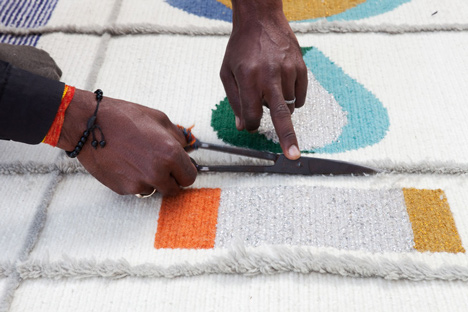
"We wanted our collection for Nanimarquina to reference the unfinished embroideries like studies of different techniques in progress, as they gradually emerge over time," said Doshi.
"The spontaneous compositions of the rugs embody the serendipity and freedom to improvise inherent in each step of a handmade piece; joyful, irreverent and unique."
The Rabari Collection is due to go on show at Salone del Mobile in Milan next month.
Photography is by Albert Font.